
Tanzanite is the exquisite blue-violet birthstone for December. Its unusual name references the small hillside region of Tanzania, East Africa, the only place on earth where the gemstone is found. Discovered in 1967, Tanzanite is more rare than Diamonds, and far more mysterious. This gem formed in the earth approximately 585 million years ago, during the violent shifting of tectonic plates that formed Mount Kilimanjaro. This gem shows blue in daylight, purple indoors, and is believed by some to enable the wearer’s psychic and telepathic abilities.
We wish you birthday blues that have nothing to do with melancholy. In fact, the official birthstone for December, Tanzanite, falls into the luscious blue-violet spectrum that metaphysical practitioners associate with the highest, most enlightened level of being !
What’s the Tanzanite story?


If you haven’t heard of Tanzanite, this may be because the mineral is also known as Zoisite.
Haven’t heard of that one either?
It’s okay, you’re in good company!
Okay, let’s start with the basics.
Although the stone formed approximately 585 million years ago in the earth’s crust, Tanzanite is a comparative newcomer to the precious stone lexicon.
“Tanzanite” is actually a trade name created by those clever people at Tiffany & Company. When the Tiffany experts got their hands on the first gem-quality specimens of the mineral Zoisite, they asked a few questions about these blue gems.
Zoisite is a natural, precious, transparent gem that occurs in a range of colors – gray, yellow, brown, pink and green as well as the coveted bluish-violet. In fact, some Zoisite has no color at all!
The blue shade of Tanzanite crystal is caused by small amounts of vanadium (a metal element) within the mineral structure.
Turns out that the world’s only known Tanzanite deposit of commercial importance is in northern Tanzania, in a small area of East Africa about eight miles square in the Merelani Hills near the base of Mount Kilimanjaro, discovered in the 1960s.
In fact, the violent shifting of the earth’s tectonic plates that caused the formation of Mount Kilimanjaro also formed the precious deposits of Zoisite that would come to be the treasure-hoard of Tanzanite.
It’s a fact that Tanzanite is more rare than Diamonds.
A blaze of blue glory
The story goes that in 1967, lighting strikes set off a wildfire that engulfed the foothills, burning out all of the vegetation.
A group of Maasai herdsmen guiding their herds in search of grasslands uncovered a cluster of clear, intense bluish-violet crystals that had “weathered out” – meaning that the fire had exposed the gems. What the locals didn’t realize is that the intense heat of the fire was responsible for “burning off” the red-brown tone and transforming the stone into an brilliant electric blue-purple, the Tanzanite color that we love today.
The herdsmen showed the stones to a trader named Manuel de Souza who immediately laid claim to Rough Tanzanite, thinking that he had happened upon a new source for Blue Sapphire.
He was puzzled, according to his journals, that the gems in the cinder-strewn area sparkled with flares of pink and red within the blue depths of crystals.
The British Museum and Harvard University confirmed that the discovery was an entirely new (in terms of classification) gemstone.
Tanzanite Mining quickly became a profitable pursuit, and the Tanzanian Government soon stepped in to regulate and monitor the supply.
Tiffany & Company became the main distributor of the gem, and decided that re-naming the stone after its place of origin would make marketing easier, so they christened it “Tanzanite.” (They were concerned that “Blue Zoisite” sounded too much like “blue suicide”!) Their original advertising campaign alerted consumers that “…Tanzanite can now be found in two places: in Tanzania, and at Tiffany’s.”
In the short time since then, it has become the second most popular blue gem after Blue Sapphire! The ethereal Tanzanite color has been likened to a gas-flame, and this specific blue color is unique among colored stones.
Today, marketing materials from Tiffany & Company state, “Tanzanite is the most beautiful blue stone to be discovered in 2,000 years.”
We love all blue gems, but we agree that this one is truly unique! In general, Tanzanites showing more blue are valued higher than those in the violet zone. Medium-dark stones are also considered the most choice.
Because these blue gems are found in just one place on earth, Tanzanite is one of the rarest gems around.
Do the math:
In fact, in 2017, Tanzania’s President Magufuli commanded his troops to build a 14-mile perimeter wall around the mining site which is believed to be the world’s only source of the bluish violet stone.
In June, 2020, a local mine owned by Saniniu Laizer discovered two enormous rough Tanzanite crystals, one weighing 9.2kg, the other weighing 5.8kg—the largest known specimens on record, worth $3.35 million, which is well below their market value! The Tanzanian government predicts that Tanzanite mining will exhaust the supply of these precious colored stone within the next two decades, adding to the allure of these Blue Gems.
Fortunately for you, we began collecting these gems for their remarkable blue color before Tanzanite prices went sky-high.
See the light !
Ask any model or actor: lighting really makes a difference! In the case of Tanzanite, the location and angle of the lighting can turn the stone from electric blue to grape-jelly purple, because Tanzanite is pleochroic, meaning that it can display a wide range of colors, depending upon how it’s lit.
Daylight brings out the blue violet shades, while incandescent indoor lighting places the stone’s color in the violetish blue range.
It’s also identified as trichroic, meaning that it shows three colors: brown, blue and violet. Extreme heat inside the earth’s crust causes brown or burgundy shades to naturally leave the stone, leaving the vivid blue and violet shades.
Gemstone cutters must decide which cut best emphasizes their preferred color, and how much of the stone’s rough weight they wish to preserve.
Registering between 6 and 7 on Mohs Hardness Scale, it’s a gem that’s ideal for High Jewelry, durable enough for a ring you’ll want to wear every day, as well as more low-impact jewels like necklaces and earrings. We recommend keeping your Tanzanite in a soft, protective pouch or box, because other harder stones (like Diamonds) can scratch it. So treat your Tanzanite with respect!
If you love Blue Sapphire, regardless of when your birthday may be, you may fall in love with Tanzanite, too. Not only for its beauty, but because, in relative terms, Tanzanite prices will be lower than a Blue Sapphire of equivalent size.
Although Tanzanite prices continue to climb, we are pleased to offer a wide range of gorgeous Tanzanite Gems in the most valuable blue color as well as bluish violet and violetish blue hues. The differences are subtle and intriguing.
And, remember: there’s no law that says you can’t have Sapphires and Tanzanite Gems, too! While sumptuary laws, meaning laws that restricted the wearing of jewels, furs, silks, and even the color purple by ordinary people, were enforced in ancient Greece, Renaissance Italy, and even later societies, today we're free to rock those Blue Gems and all the colored stones of the rainbow as much as we like.
Wear it in good health!
The ethereal blue-violet spectrum of Tanzanite is aligned with the Crown Chakra, or the highest level of consciousness and awareness.
Many metaphysical practitioners say that the blue color of the rare Tanzanite crystal is useful in opening the channels of intuition and perception, as well as detoxifiying the body.
Some crystal healers use it to open the “third eye” and enhance psychic and telepathic powers.
Because of the stone’s pleochroism, the stone is also associated with transformation and metamorphosis – what some call “transmutation.”
For this reason, some crystal healers suggest wearing and carrying the gem when you are consciously seeking change in your relationships, work or career, residence, and even within your relationship with yourself.
According to this idea, wearing Tanzanite allows you to receive intuitive and emotional knowledge and then interpret share it effectively with others, making this gem a favorite of counselors and others in service professions.
Crystal aficionados believe that a Tanzanite crystal supports the immune system, especially of interest during winter’s indoors flu-season and the continued threat of COVID19.
This theory holds that Tanzanite promotes the regeneration of cells, and offsets the trauma of surgery and medication. It’s also linked with relieving stress and migraine headaches.
We can’t promise that any of these claims are fact. What we can promise is that we offer some of the most breathtakingly beautiful Tanzanite gemstones in the world, and will be happy to creatively collaborate with you to create a piece of High Jewelry you’ll cherish forever!
We welcome you to use our expertise as your buying guide!
Whether you’re shopping for yourself or for someone with a December birthday, call us for a free design consultation, and discover the exquisite experience waiting for you in a Tanzanite gemstone!

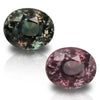 Alexandrite
Alexandrite Amethyst
Amethyst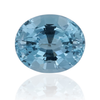 Aquamarine
Aquamarine Chrysoberyl
Chrysoberyl Demantoid
Demantoid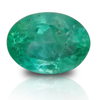 Emerald
Emerald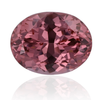 Garnet
Garnet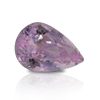 Kunzite
Kunzite Paraiba
Paraiba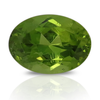 Peridot
Peridot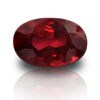 Ruby
Ruby Sapphire
Sapphire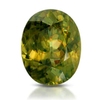 Sphene
Sphene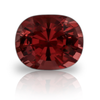 Spinel
Spinel Tanzanite
Tanzanite Topaz
Topaz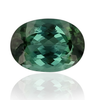 Tourmaline
Tourmaline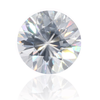 Zircon
Zircon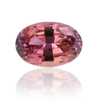 Zoisite
Zoisite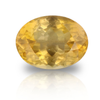 Rare Gemstones
Rare Gemstones Heart Shape
Heart Shape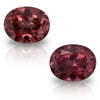 Matched Duo
Matched Duo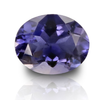 Everyday Candy
Everyday Candy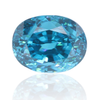 Insta Therapy
Insta Therapy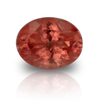 Mini-Splurge
Mini-Splurge

